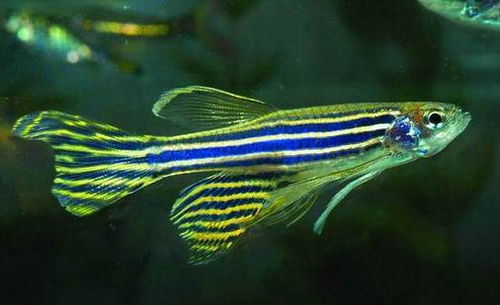Individual gene differences can be tested in zebrafish

The zebrafish is a potential tool for testing one class of unique individual genetic differences found in humans, and may yield helpful information for the emerging field of personalized medicine, according to a team led by Penn State College of Medicine scientists. The differences, or mutations, in question create minor changes in amino acids — the building blocks of DNA — from person to person. Zebrafish can be used as a model to understand what biological effects result from these genetic mutations.
Personalized medicine uses modern technology and tools to find biological and genetic differences in individuals so that treatment is more effectively delivered.
“A major challenge of personalized medicine is the lack of a standard way to define the importance of each of the many unique mutations found in an individual's genetic code,” said Keith Cheng, MD, PhD, professor of pathology and lead researcher. “Approaches are particularly needed to experimentally determine what differences these mutations make. It is difficult to distinguish the effects of a single amino acid change caused by those changes in our DNA.”
The zebrafish is a good choice because of its similarity to humans as a vertebrate, its transparency as an embryo, and the powerful genetic tools available in this model organism.
The Cheng lab's approach is like testing small damages in car parts, one at a time. For example, a “mutant” car headlight is known not to work when a certain connector is missing. Taking a normally functioning connector out of a working headlight and replacing it with a connector damaged in a specific way — a cracked wire casing or a corroded wire connector, for example — can show whether the damage matters. If the light works, then that mutation makes no difference on the function of the headlight. If the light does not work, the mutation has an effect.
Postdoctoral fellow Zurab Tsetskhladze, who performed the zebrafish experiments, tested this method with two genes that affect skin color. He started with an equivalent of the broken car part: mutant zebrafish with lighter pigment cells. First, Tsetskhladze confirmed that by injecting normal messenger RNA into the mutant zebrafish, the lighter pigment cells become “cured” — or darker — like those of a normal zebrafish. Messenger RNA (ribonucleic acid) makes the cells produce the protein the scientists want to study. Tsetskhladze was then able to test RNA with only one “human” mutation to see if cure was still possible. Cure suggests that the mutation does not matter. If cure is prevented by the mutation, the conclusion is that the protein's function is affected by the amino acid difference being tested.
Cheng's lab works with zebrafish to study genetic differences that contribute to human skin color. Scientists want to determine the role these differences may play in the development of skin cancer, and to find ways to better protect people from cancer.
In the current study, two of the amino acid differences that Cheng has shown in prior studies to contribute to light skin color in humans prevented the zebrafish color from darkening. A third amino acid difference that is common in Eastern Asians was of unknown effect. The researchers found that the change made no difference in function in zebrafish. This finding matched the findings of K.C. Ang, postdoctoral fellow, who found no effect of the tested change on the skin color of East Asians.
To see if this approach might be used in other ways, Stephen Wentzel, graduate student, Penn State College of Medicine, looked at mutations in the four genes known to contribute to albinism, which lightens the color of skin, eyes and hair, and is associated with any one of more than 250 known single amino acid differences. He found that at least 210 of these are theoretically testable in the zebrafish. This new test may help scientists to determine which mutations can be ignored and which may need action – such as a change in life habit.
“This approach may potentially be extended to other biological functions and may therefore be useful in personalized medicine,” Cheng said.
The researchers published their findings in PLoS ONE.
Other researchers are Khai C. Ang, Steven M. Wentzel, Katherine P. Reid, all of Jake Gittlen Cancer Research Foundation, Division of Experimental Pathology, Penn State College of Medicine; Victor A. Canfield, Department of Pharmacology, Penn State College of Medicine; Arthur S. Berg, Department of Public Health Sciences, and Stephen L. Johnson, Department of Genetics, Washington University Medical School; and Koichi Kawakami, Division of Molecular and Developmental Biology, National Institute of Genetics, Japan.
This work was funded by a grant from the National Institutes of Health. (NIH: 5R01 AR052535)
If you're having trouble accessing this content, or would like it in another format, please email Penn State Health Marketing & Communications.
